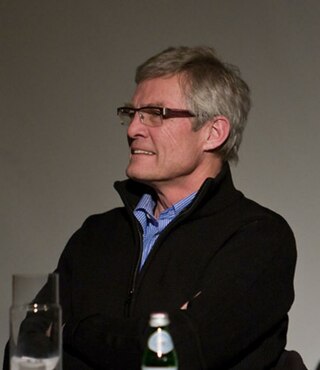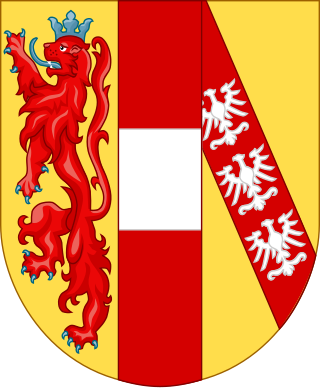Related Research Articles

Mechelen is a city and municipality in the province of Antwerp in the Flemish Region of Belgium. The municipality comprises the city of Mechelen proper, some quarters at its outskirts, the hamlets of Nekkerspoel (adjacent) and Battel, as well as the villages of Walem, Heffen, Leest, Hombeek, and Muizen. The river Dyle (Dijle) flows through the city, hence it is often referred to as the Dijlestad.
Seydou Keïta was a Malian photographer known for his portraits of people and families he took at his portrait photography studio in Mali's capital, Bamako, in the 1950s. His photographs are widely acknowledged not only as a record of Malian society but also as pieces of art.

The International Falcon Movement – Socialist Educational International (IFM-SEI) is an international non-profit organisation based in Belgium that campaigns for children's rights. It is a fraternal organisation of Socialist International and works closely with International Union of Socialist Youth (IUSY) and Young European Socialists. IFM-SEI is a full member of the European Youth Forum (YFJ) which operates within the Council of Europe and European Union area and works closely with both these bodies. In Latin-America it is a full member of the Foro Latin-America de Juventud (FLAJ). It is also part of the International Coordination Meeting of Youth Organisations (ICMYO) which consists of worldwide active youth organisations and regional youth platforms coordinating their activities towards the UN and its agencies.

Albert Watson OBE is a Scottish fashion, celebrity and art photographer. He has shot over 100 covers of Vogue and 40 covers of Rolling Stone magazine since the mid-1970s, and has created major advertising campaigns for clients such as Prada, Chanel and Levis. Watson has also taken some well-known photographs, from the portrait of Steve Jobs that appeared on the cover of his biography, a photo of Alfred Hitchcock holding a plucked goose, and a portrait of a nude Kate Moss taken on her 19th birthday.

Dora Philippine Kallmus, also known as Madame D'Ora or Madame d'Ora, was an Austrian fashion and portrait photographer.

Viatcheslav Moshe Kantor is a Russian businessman.

John O'Brian is an art historian, writer, and curator. He is best known for his books on modern art, including Clement Greenberg: The Collected Essays and Criticism, one of TheNew York Times "Notable Books of the Year" in 1986, and for his exhibitions on nuclear photography such as Camera Atomica, organized for the Art Gallery of Ontario in 2015. Camera Atomica was the first comprehensive exhibition on postwar nuclear photography. From 1987 to 2017 he taught at the University of British Columbia, Vancouver, where he held the Brenda & David McLean Chair in Canadian Studies (2008-11) and was an associate of the Peter Wall Institute for Advanced Studies. O'Brian has been a critic of neoconservative policies since the start of the Culture Wars in the 1980s. He is a recipient of the Thakore Award in Human Rights and Peace Studies from Simon Fraser University.
The Society for Artistic Research (SAR) is an international nonprofit, artistic and scientific society devoted to developing, linking and disseminating internationally artistic research as a specific practice of producing knowledge. SAR also aims to facilitate co-operation and communication among those interested in the study and practices of artistic research.

The International Union of Socialist Youth (IUSY) is an international youth labour organization, whose activities include publications, supporting member organizations and organization of meetings. Originally named the Socialist Youth International, the union was formed at the 1907 International Socialist Congress at Stuttgart as the youth wing of the Second International.

Association football was included in every three editions of International Workers' Summer Olympiads in 1925, 1931 and 1937 as a men's competition sport. Tournaments were played as a single-elimination tournament. Countries were represented by selected teams of their workers' sports associations and the players were mostly amateurs. Exception was the Soviet team in 1937 as it was based mostly on the team of masters of Spartak sports society out of Moscow and participating in the recently established in the Soviet Union competitions of football teams of sports societies, Class A, a predecessor of the Soviet Top League.
Colin John Ford is a British photographic curator, historian of photography, and former museum director. He has written a number of books on the history of photography.
Events in the year 1993 in the European Union.

Dr. Emil Mayer was an Austrian photographer, lawyer, inventor, and businessperson.
Jan Van der Stock is a Belgian art historian and exhibition curator. He is a full professor at the University of Leuven, where he lectures on Medieval and Renaissance Arts, Graphic Arts, Iconography, Iconology, and Curatorship. He is the director of Illuminare – Centre for the Study of Medieval Art and holder of the Van der Weyden Chair – Paul & Dora Janssen, the Veronique Vandekerchove Chair of the City of Leuven and the Chair of Medieval Sculpture in the Low Countries. Jan Van der Stock was the husband of Prof. dr. Christiane Timmerman and is the father of Willem and Liza Van der Stock.

Margaret Florence Harker, was a British photographer and historian of photography. She was the UK's first woman professor of photography, founded the country's first photography degree course, and was the first woman to be president of the Royal Photographic Society.
Marilena Preda Sânc is a Romanian visual artist, art educator (current position – professor at National University of Arts, Bucharest, and author of feminism and Public Art writings. She is known for being one of the most active feminist artists in the country. She uses a multidisciplinary approach by employing various media such as drawing, painting, mural art, book-objects, video, performance, photography, and installation, and her work has been shown in museums, galleries, conferences, symposium, and broadcast venues around the world.
Hans Nieuwdorp is a Belgian art historian specialized in late medieval sculpture. In 2000, he was appointed director of the Art Museums of the City of Antwerp.
European Photography, based in Berlin, is an independent art magazine for international contemporary photography and new media. It was founded in 1980 and is published by the German artist Andreas Müller-Pohle.
Gottfried Jäger is a German photographer, photo-theorist and former university teacher.

Maria-Anna Galitzine, also known as Archduchess Maria-Anna of Austria and Princess Maria-Anna Galitzine, is a Belgian traditionalist Catholic activist and member of the House of Habsburg-Lorraine. A granddaughter of Charles I of Austria and Zita of Bourbon-Parma, the last emperor and empress of Austria-Hungary, she has been active in supporting their cause for sainthood in the Catholic Church.
References
- ↑ Eds. Anna Auer / Uwe Schögl (2008). JUBILEE 30 Years ESHPh. Fotohof edition. p. 503. ISBN 978-3-902675-04-0.
- ↑ Eds. Anna Auer/Alistair Crawford: Helmut Gernsheim Reconsidered. The proceedings of the Mannheim Symposium, Klinger Verlag, Passau 2004; ISBN 3-932949-37-4
- ↑ Eds. Anna Auer/Uwe Schögl: Photography and Research in Austria - Vienna the Door to the European East. The proceedings of the Vienna Symposium, Klinger Verlag, Passau, 2002, ISBN 3-932949-12-9
- ↑ R. Derek Wood, ed. (July 1995). "photohistorica 54/55 - Foreword". European Society for the History of Photography. Retrieved 7 November 2012.
- ↑ R. Derek Wood (ed.). "Indexes to photohistorica, issues 54/55; 56/57 - Postscript". European Society for the History of Photography. Retrieved 7 November 2012.